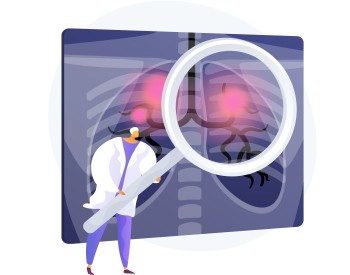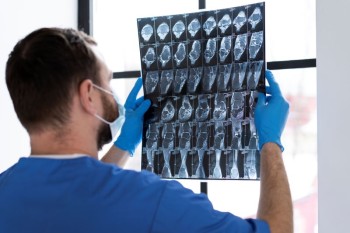
CT Neck Angiography is a specialized imaging procedure that employs computed tomography to capture high-resolution images of the blood vessels within the neck.
CT Scan Neck Angiography in India with Cost
CT Neck Angiography:
Navigating Vascular Clarity
Introduction
Embarking on Vascular Exploration with CT Neck Angiography
CT Neck Angiography is an advanced imaging technique that focuses on providing detailed insights into the vascular structures of the neck. This comprehensive guide aims to unravel the significance, procedure, and applications of CT Neck Angiography, offering a thorough understanding of its role in vascular diagnostics.
Understanding CT Neck Angiography
What is CT Neck Angiography?
CT Neck Angiography is a specialized imaging procedure that employs computed tomography to capture high-resolution images of the blood vessels within the neck. This technique is particularly valuable for assessing vascular conditions and abnormalities.
The Significance of CT
Neck Angiography
Precision in Vascular Assessment
CT Neck Angiography plays a crucial role in precision vascular assessment, allowing for the detailed visualization of blood vessels in the neck. This aids in the diagnosis and characterization of various vascular conditions.
Detecting Aneurysms and Stenosis
With high-resolution images, the scan facilitates the detection of aneurysms, stenosis, and other vascular abnormalities, contributing to accurate diagnosis and treatment planning.
The Procedure: A Step-by-Step Guide
Patient Preparation
Patients undergoing CT Neck Angiography typically require minimal preparation. It's crucial to communicate any allergies or relevant medical history to the healthcare team.
Contrast Injection
A contrast dye is injected into the patient's veins to enhance the visibility of blood vessels during imaging, ensuring detailed and accurate results.
Image Acquisition
The CT scanner captures multiple high-resolution images, offering detailed cross-sectional views of the vascular structures within the neck.
Applications of CT Neck Angiography
Diagnosing Vascular Abnormalities
CT Neck Angiography is highly effective in diagnosing vascular abnormalities, providing precise images that assist in determining the location, extent, and nature of the vascular condition.
Assessing Blood Flow and Perfusion
The detailed imaging capabilities of this scan make it an invaluable tool for assessing blood flow and perfusion in the neck, aiding in the evaluation of vascular health.
Advantages and Considerations
Advantages of CT Neck Angiography
Clear Visualization of Vascular Structures
CT Neck Angiography offers clear visualization of vascular structures, ensuring accurate assessment and aiding in the identification of abnormalities.
Non-Invasive Procedure
The procedure is relatively non-invasive, contributing to patient comfort and ease of examination while delivering high-quality diagnostic information.
Considerations and Precautions
Contrast-Related Considerations
While contrast injection is generally safe, the medical team considers any potential allergies or kidney issues that might affect contrast utilization.
Radiation Exposure
As with any CT scan, consideration is given to radiation exposure. The healthcare team carefully evaluates the benefits against the risks for each patient.
Conclusion
In conclusion, CT Neck Angiography emerges as a pivotal diagnostic tool, providing detailed and high-resolution images for precise assessment of vascular conditions in the neck. From aneurysms to blood flow evaluation, this imaging technique significantly contributes to enhancing vascular diagnostics.
FAQs: Clarifying CT Neck Angiography
1. Is CT Neck Angiography a painful procedure?
No, the procedure is generally painless. Patients may experience slight discomfort from the contrast injection.
2. How long does a CT Neck Angiography take?
The procedure typically takes around 30 to 60 minutes, depending on the patient's condition.
3. Can pregnant women undergo CT Neck Angiography?
While generally safe, precautions are taken for pregnant women, and alternative imaging methods may be considered.
4. Are there any dietary restrictions before CT Neck Angiography?
Generally, there are no specific dietary restrictions for this scan. However, patients are advised to follow any instructions provided by the healthcare team.
5. How often is CT Neck Angiography recommended for follow-up examinations?
Follow-up scans are scheduled based on the individual's medical history and the presence of specific vascular conditions.
6. Is CT Neck Angiography safe for individuals with kidney issues?
While generally safe, individuals with kidney issues are carefully evaluated, and alternative imaging methods may be considered to minimize potential risks related to contrast injection.
7. Can CT Neck Angiography detect arterial dissections?
Yes, CT Neck Angiography is highly sensitive and can effectively detect arterial dissections, providing valuable information for diagnosis and treatment planning.
8. How soon can one resume normal activities after CT Neck Angiography?
While many patients can typically return to their regular activities right after the procedure, it is recommended to have someone accompany them home, especially if sedation is administered.
9. Are there age restrictions for CT Neck Angiography?
There are no strict age restrictions, and the procedure can be performed on individuals of various age groups, depending on their health condition.
10. Can CT Neck Angiography be performed in emergency situations?
Yes, CT Neck Angiography is a valuable tool in emergency situations, providing rapid and detailed imaging for prompt diagnosis and intervention.
(0)
Login to continue



